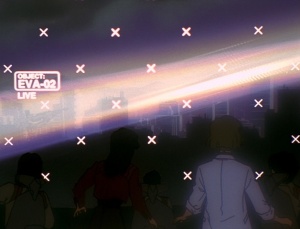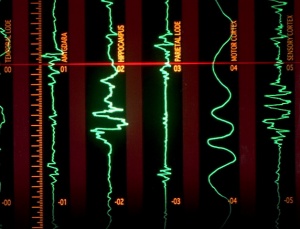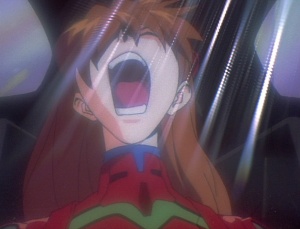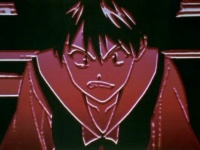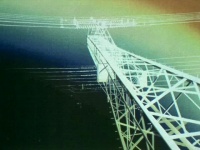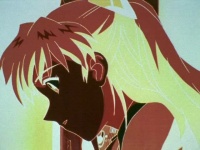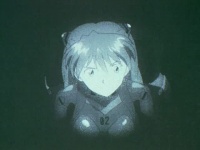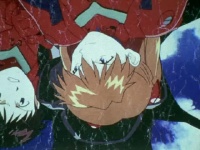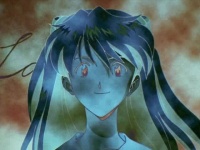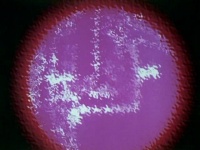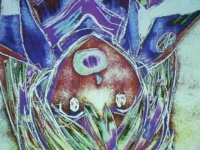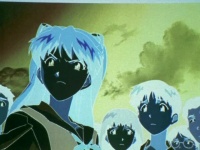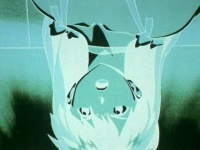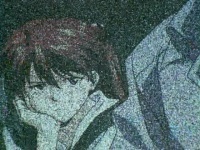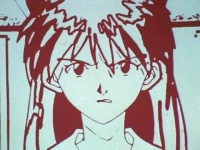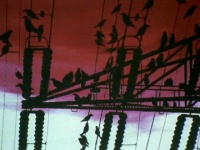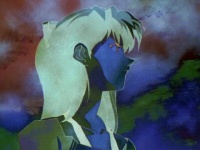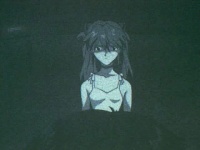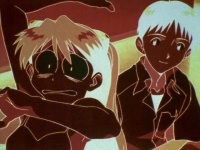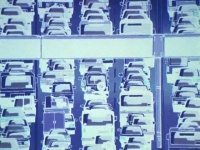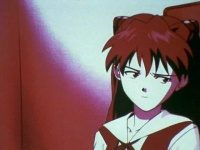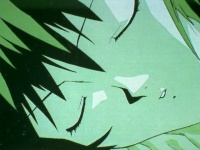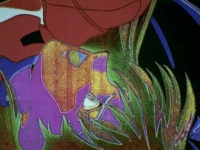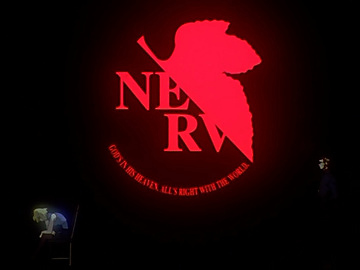Difference between revisions of "Theory and Analysis:Film Montage Theory in Evangelion"
| (5 intermediate revisions by the same user not shown) | |||
| Line 1: | Line 1: | ||
{{Expand}} | {{Expand}} | ||
| − | Evangelion is usually looked at in a narrative sense, but it is necessary to also assess it at the technical level of cinematography, and specifically in this essay, at the level of montage. There are several montage sequences in the series, but they are most notable and pronounced in Episodes 14, 22, and 26'. Though there are others, the montage sequences in these three episodes will be broken down in the first edition of this critical essay. | + | Evangelion is usually looked at in a narrative sense, but it is necessary to also assess it at the technical level of cinematography, and specifically in this essay, at the level of montage. There are several montage sequences in the series, but they are most notable and pronounced in [[Episode 14|Episodes 14]], [[Episode 22|22]], and [[Episode 26|26']]. Though there are others, the montage sequences in these three episodes will be broken down in the first edition of this critical essay. |
This page is being adapted from the [[User:Ran1]] page, mostly with material from the original author. Please refer to him if you wish to discuss it. | This page is being adapted from the [[User:Ran1]] page, mostly with material from the original author. Please refer to him if you wish to discuss it. | ||
| Line 33: | Line 33: | ||
* B) Now,we have an image that depicts one of the computer terminals reading statistics on what appears to be Asuka's brain waves. As it can be seen, the waves have risen sharply. Something is going on, it is just unclear as to what exactly it is. This shot has built upon the greater meaning of the first, and this is a step in understanding the montage. But what follows next will actually reveal the nature of the montage. | * B) Now,we have an image that depicts one of the computer terminals reading statistics on what appears to be Asuka's brain waves. As it can be seen, the waves have risen sharply. Something is going on, it is just unclear as to what exactly it is. This shot has built upon the greater meaning of the first, and this is a step in understanding the montage. But what follows next will actually reveal the nature of the montage. | ||
| − | * C) And there is the meaning! Asuka has been attacked by the angel-- that is to say, that our worst fears have been realized. The light, the rainbow, and then Asuka herself were all shots that, when built upon each other, are able to give the viewer context and meaning. Though this seems like a very basic and obvious deconstruction of those three images, when it comes to actually assessing the visual discord in the rapid paced montages in Asuka's mindrape later during the episode, this kind of basic knowledge must be there-- otherwise we will possibly look at the montage images in | + | * C) And there is the meaning! Asuka has been attacked by the angel-- that is to say, that our worst fears have been realized. The light, the rainbow, and then Asuka herself were all shots that, when built upon each other, are able to give the viewer context and meaning. Though this seems like a very basic and obvious deconstruction of those three images, when it comes to actually assessing the visual discord in the rapid paced montages in Asuka's mindrape later during the episode, this kind of basic knowledge must be there-- otherwise we will possibly look at the montage images in separate entities. This cannot be risked due to losing a greater meta-meaning in the montage sequence itself. |
}} | }} | ||
| Line 46: | Line 46: | ||
==Episode 22== | ==Episode 22== | ||
| − | The montage sequences that are most notable are the ones presented in the "mind-rape" scenes, in which Asuka has her deepest, darkest memories brought to the surface, further compounding her insecurities. As her forced introspection reaches the point of climax, the viewer is presented with a total deconstruction of Asuka in every sense of the word. We see her thoughts, desires, and feelings laid before us, and there reaches a point in which we see the beginning of Asuka's downward spiral, her rejection of The Other, most notably manifest in three beings: Her mother, Kaji, and Shinji. | + | The montage sequences that are most notable are the ones presented in the "mind-rape" scenes, in which [[Asuka]] has her deepest, darkest memories brought to the surface, further compounding her insecurities. As her forced introspection reaches the point of climax, the viewer is presented with a total deconstruction of Asuka in every sense of the word. We see her thoughts, desires, and feelings laid before us, and there reaches a point in which we see the beginning of Asuka's downward spiral, her rejection of The Other, most notably manifest in three beings: Her mother, [[Kaji]], and [[Shinji]]. |
Here is the final of these mind-rape montages: | Here is the final of these mind-rape montages: | ||
| Line 83: | Line 83: | ||
* Shots 1-4: What we see are two images of Asuka-- one condescending, and one of a determined/angry look on Asuka's face. But there is most notably a "tear" in the shot, which indicates either a tear, or crack in Asuka's personality. This is to say that this is not the complete and true person of Asuka, as we have seen now. But, the two images are also speaking in a narrrative sense. At the outset of the narrative, Asuka was both of these, but we know that this was just a facade put on by her, hence the shot of Tokyo-3's facade. A face of a mortified Asuka is the first of several sub-payoffs, shots that reinforce statements made by the previous shots, and act as transitions in this case. Asuka realizes that these two things are not hwe true self -- but her is questioning, as well, what is her true nature? And what defines it? | * Shots 1-4: What we see are two images of Asuka-- one condescending, and one of a determined/angry look on Asuka's face. But there is most notably a "tear" in the shot, which indicates either a tear, or crack in Asuka's personality. This is to say that this is not the complete and true person of Asuka, as we have seen now. But, the two images are also speaking in a narrrative sense. At the outset of the narrative, Asuka was both of these, but we know that this was just a facade put on by her, hence the shot of Tokyo-3's facade. A face of a mortified Asuka is the first of several sub-payoffs, shots that reinforce statements made by the previous shots, and act as transitions in this case. Asuka realizes that these two things are not hwe true self -- but her is questioning, as well, what is her true nature? And what defines it? | ||
| − | *Shots 5-16: We see another determined look on the part of Asuka, but what is she determined about? The next shot confirms what: Shinji. She is wearing the same bathing suit that she wore in Episode 10. But is this just some good-humored flirtation on Asuka's part? Asuka again looks determined, a shot that also suggests that she is revving up her Eva. The next shot confirms it: Angel number six. Asuka's first time in combat. And what happens? She allows Shinji, to enter the heart (or womb, if one takes the Freudian approach), you might say, if one were to think of it in such a manner. Asuka is inviting Shinji into something sacred: what she truly only sees as an identifying body: her Eva, and her status as an Eva pilot. We see, in essence, an acceptance of Shinji as a potential significant other. Note the Eva=Mother/Shinji=Significant Other dichotomy. | + | *Shots 5-16: We see another determined look on the part of Asuka, but what is she determined about? The next shot confirms what: Shinji. She is wearing the same bathing suit that she wore in [[Episode 10]]. But is this just some good-humored flirtation on Asuka's part? Asuka again looks determined, a shot that also suggests that she is revving up her Eva. The next shot confirms it: Angel number six. Asuka's first time in combat. And what happens? She allows Shinji, to enter the heart (or womb, if one takes the Freudian approach), you might say, if one were to think of it in such a manner. Asuka is inviting Shinji into something sacred: what she truly only sees as an identifying body: her Eva, and her status as an Eva pilot. We see, in essence, an acceptance of Shinji as a potential significant other. Note the Eva=Mother/Shinji=Significant Other dichotomy. |
:Next we have Asuka in a school uniform. This is the first time she is in one, and she does not look thrilled. But we see a totally different expression on Asuka's face in the next shot. Why? This is another well placed reinforcement about Asuka's own projected images of herself as the "popular foreign girl". Her displeasure at the love letters in her gym locker confirms this. She is not attempting to impress these other boys -- she is trying to impress the person (people, possibly including Kaji) who she has been "going after" -- Shinji. | :Next we have Asuka in a school uniform. This is the first time she is in one, and she does not look thrilled. But we see a totally different expression on Asuka's face in the next shot. Why? This is another well placed reinforcement about Asuka's own projected images of herself as the "popular foreign girl". Her displeasure at the love letters in her gym locker confirms this. She is not attempting to impress these other boys -- she is trying to impress the person (people, possibly including Kaji) who she has been "going after" -- Shinji. | ||
| − | :Next we see shots furthering the Asuka/Shinji theme of this montage. Asuka angry over Shinji's pervertedness -- but notice the placement of the shot. It is upside down -- my theory behinf this is that turning the shot upside down is a method of refuting the content and subtext within the shot. That is to say that Asuka ''seems'' | + | :Next we see shots furthering the Asuka/Shinji theme of this montage. Asuka angry over Shinji's pervertedness -- but notice the placement of the shot. It is upside down -- my theory behinf this is that turning the shot upside down is a method of refuting the content and subtext within the shot. That is to say that Asuka ''seems'' embarrassment over the implication of Shinji's pervertedness, but in an equally perverted way, she wants his gaze. The relationship implication "the newlyweds", Toji said, embarrasses both Shinji and Asuka. Judging by the usual anime-implications of the notable "full-face" blush, both of them want the relationship to occur -- it is just that Asuka is exploring, albeit awkwardly, the feasibility of the relationship, and that Shinji is perhaps blushing over Toji's perceptiveness, along with his own inability to reach out to Asuka. |
:Next, we have a shot of real vulnerability. Asuka's sobbing over her mother as she sleeps in Shinji's bed. Again we are returning to an exploration of the mother vs. significant other theme. The next shot is more overt flirtatiousness on the part of Asuka. Again, this is more attention getting behavior on her part, sexualizing herself for the male gaze. | :Next, we have a shot of real vulnerability. Asuka's sobbing over her mother as she sleeps in Shinji's bed. Again we are returning to an exploration of the mother vs. significant other theme. The next shot is more overt flirtatiousness on the part of Asuka. Again, this is more attention getting behavior on her part, sexualizing herself for the male gaze. | ||
| Line 93: | Line 93: | ||
:Finally, the key statement made in this sub-montage: She, throughout the series, actively rejected her statement of hatred of Shinji in Episode 22. She is reacting adversely to the inability of Shinji to properly respond, but she still wants him. | :Finally, the key statement made in this sub-montage: She, throughout the series, actively rejected her statement of hatred of Shinji in Episode 22. She is reacting adversely to the inability of Shinji to properly respond, but she still wants him. | ||
| − | *Shots 17-23: The conclusion of sorts. We see an | + | *Shots 17-23: The conclusion of sorts. We see an inter-title that reads "Are you stupid?". This quote, almost always directed at Shinji, rings especially true. "Are you stupid," she asks, "because you refuse to respond to me?!". With her going as far as climbing into his bed, shown in the next shot, and canceling a date with another boy, shown in the shot after that, she is justifiably angry. The next shot builds on the "are you stupid theme", an almost fully accusative shot, pointing a finger at Shinji. |
| − | :In the final three shots, we will finally reach the conclusion, the climax, the major statement that this montage has been building up to. We see a misty scene, so what we can imply is that there is a truth needing to be unveiled, a secret code needing to be cracked: What does Asuka want? In what seems to be a phallic allegory, the answer is simply: Shinji. And with the final shot of her piloting flipped, one can only assume that this realization has turned all of her facades, defense mechanisms, and her | + | :In the final three shots, we will finally reach the conclusion, the climax, the major statement that this montage has been building up to. We see a misty scene, so what we can imply is that there is a truth needing to be unveiled, a secret code needing to be cracked: What does Asuka want? In what seems to be a phallic allegory, the answer is simply: Shinji. And with the final shot of her piloting flipped, one can only assume that this realization has turned all of her facades, defense mechanisms, and her justification for existence completely upside-down. |
}} | }} | ||
| Line 129: | Line 129: | ||
*SHOTS 8-17: What we see next is a shot of a very condescending Asuka. She is looking down on someone, something -- but the question is, why? Who is she to look down on someone? A girl who cannot even handle herself? And to whom is she looking for approval from, if anyone? Another shot of her looking condescending is flipped upside down, a further refutement of the sentiment. The next shot answers the question: Asuka is looking for the approval of none other than Shinji. She wants him to notice her, to respond to her, somehow. | *SHOTS 8-17: What we see next is a shot of a very condescending Asuka. She is looking down on someone, something -- but the question is, why? Who is she to look down on someone? A girl who cannot even handle herself? And to whom is she looking for approval from, if anyone? Another shot of her looking condescending is flipped upside down, a further refutement of the sentiment. The next shot answers the question: Asuka is looking for the approval of none other than Shinji. She wants him to notice her, to respond to her, somehow. | ||
| − | :Obviously, this angers her, his usual lack of response or incorrect response to any of her advances. She feels that she is just another crow on the wire, so to speak, as evidenced by this shot -- and is maddened by it. This is followed by a look of determination -- something is driving her to | + | :Obviously, this angers her, his usual lack of response or incorrect response to any of her advances. She feels that she is just another crow on the wire, so to speak, as evidenced by this shot -- and is maddened by it. This is followed by a look of determination -- something is driving her to separate herself, to become acknowledged, but what and by whom? The next shot again answers, she is looking at Shinji, for his response. It seems, however, that the next shot of her acting wildly seems to reinforce the impression that Shinji will only notice her if she acts out, if she treats him poorly or acts flamboyantly. If she doesn't do so, she will only be another face in the crowd, or car on the road, as exemplified in the following shot. |
*SHOTS 18-20: What we see in shot eighteen is the beginning of Asuka's final conceit, her conclusion. She is a failed romantic, opening herself up to Shinji but failing miserably, and her physical failure of being an Eva pilot who can no longer produce successful results. This conclusion, this payoff shot(s) begs the question for Asuka: to where do you go from here? | *SHOTS 18-20: What we see in shot eighteen is the beginning of Asuka's final conceit, her conclusion. She is a failed romantic, opening herself up to Shinji but failing miserably, and her physical failure of being an Eva pilot who can no longer produce successful results. This conclusion, this payoff shot(s) begs the question for Asuka: to where do you go from here? | ||
| Line 167: | Line 167: | ||
|caption = | |caption = | ||
"Episode 22 Cuts" | "Episode 22 Cuts" | ||
| − | *SHOTS 1-10: While the statement "I can live on my own!" blares on in the background -- we first see that side of Asuka that is so connected to the other -- her "projected self". The next shot is Asuka staring, but at what? Following this, we see another piece of machinery -- most likely a traincar linkage, implying that she is indeed linked to others. We see a face of Asuka's anger -- but at what? The only interpretation is at the thing that she is trying to force upon herself -- the fact that she "can live on [her] own!" Then the phallic shot -- but it is inverted, and | + | *SHOTS 1-10: While the statement "I can live on my own!" blares on in the background -- we first see that side of Asuka that is so connected to the other -- her "projected self". The next shot is Asuka staring, but at what? Following this, we see another piece of machinery -- most likely a traincar linkage, implying that she is indeed linked to others. We see a face of Asuka's anger -- but at what? The only interpretation is at the thing that she is trying to force upon herself -- the fact that she "can live on [her] own!" Then the phallic shot -- but it is inverted, and discolored. Is she angry at her own statement that she can't live without Shinji? What we see next is the same picture we have seen in the previous montages. This will be from now on called the "command Asuka" because in [[Episode 8]], where this screen-cap is taken, this shot is Asuka telling Shinji to follow her (in order to show off her Eva). But what is she commanding? Food, or the production of it. Who is the cook in the Katsuragi residence? Shinji, which Asuka realizes, turning round in the next shot. And like it or not, she really does care about his well-being, even if embarrassed to show it. But once again, this begs the question -- why does she hide her emotions like that? Is it the fear of rejection and/or something more? |
| − | *SHOTS 11-21: The next shots seem to answer whatever questions are left to be answered: Asuka wants to "lead the charge", and "make the first move" [screencap from just before | + | *SHOTS 11-21: The next shots seem to answer whatever questions are left to be answered: Asuka wants to "lead the charge", and "make the first move" [screencap from just before [[Episode 15]] kiss scene], shedding light on her domestic troubles. This, I believe opens up a whole new dimension in the realm of the "synthetic family", something that should be explored in further detail. It truly seems to "shed light" (next shot) on her troubles in piloting the Eva (following shot). Asuka looks at her superiority over the other Eva pilots, both suggested in the shot itself, and in the context of the earlier episodes, where she had generally a higher sync ratio. Her broken self (EoTV screenshot again, where she was really laid out to bare her emotions full-on), was completely justified by her control, reacting negatively when it was implied otherwise, as evidenced in the defensiveness of Toji implying a relationship that she was not "entirely in-control of". |
:The next shot deserves notice in the fact that it is a screenshot of Asuka "fading away". This is probably alluding to the feeling of "fading away" that she feels when not being bombastic, and fully in control of any situation. If she is not, then she is just another car in the train, so to speak. | :The next shot deserves notice in the fact that it is a screenshot of Asuka "fading away". This is probably alluding to the feeling of "fading away" that she feels when not being bombastic, and fully in control of any situation. If she is not, then she is just another car in the train, so to speak. | ||
| Line 185: | Line 185: | ||
---- | ---- | ||
| − | Subverting Wide-Shot stereotypes in Episode 24 of Neon Genesis Evangelion | + | Subverting Wide-Shot stereotypes in [[Episode 24]] of Neon Genesis Evangelion |
| Line 230: | Line 230: | ||
}} | }} | ||
| − | 1.This shot is manifold in dichotomy. First we have what is the obvious: Ritsuko mourning the loss of her cat, and Gendo angry over the loss of the dummy system. But what we have here goes a little deeper than that: What we see now is a Ritsuko who has lost all love for her work, and a Gendo who is working for his love. This shot is a manifestation of the things that it cost the two of them: Ritsuko has lost the things that gave her life justification, Gendo has lost his “soul” and empathy in the process of executing his plan for instrumentality. | + | 1.This shot is manifold in dichotomy. First we have what is the obvious: [[Ritsuko]] mourning the loss of her cat, and [[Gendo]] angry over the loss of the dummy system. But what we have here goes a little deeper than that: What we see now is a Ritsuko who has lost all love for her work, and a Gendo who is working for his love. This shot is a manifestation of the things that it cost the two of them: Ritsuko has lost the things that gave her life justification, Gendo has lost his “soul” and empathy in the process of executing his plan for instrumentality. |
2.What goes even deeper is the symbol that sits in the middle of the two of them: a glowing symbol of NERV. What we can see here is the organization and symbol that brought the two of them together, and then drove the two apart. Unlike the previous image where the composition isn't as important as the words being spoken, here we have an image of the very essence of their relationship. For Gendo, NERV is a tool to retrieve his wife. Thus, for the most part he treats those who are a part of it like tools. His emotional detachment to many of the characters is quite obvious throughout the series. For Ritsuko, however, NERV is the justification for her being, what makes Ritsuko Ritsuko is NERV itself, and she treats it very seriously. A classic “conflict of interests” manifested through the organization itself is brilliantly played in this scene through both words and visuals. | 2.What goes even deeper is the symbol that sits in the middle of the two of them: a glowing symbol of NERV. What we can see here is the organization and symbol that brought the two of them together, and then drove the two apart. Unlike the previous image where the composition isn't as important as the words being spoken, here we have an image of the very essence of their relationship. For Gendo, NERV is a tool to retrieve his wife. Thus, for the most part he treats those who are a part of it like tools. His emotional detachment to many of the characters is quite obvious throughout the series. For Ritsuko, however, NERV is the justification for her being, what makes Ritsuko Ritsuko is NERV itself, and she treats it very seriously. A classic “conflict of interests” manifested through the organization itself is brilliantly played in this scene through both words and visuals. | ||
| Line 254: | Line 254: | ||
Wide shots used for argument | Wide shots used for argument | ||
}} | }} | ||
| + | |||
| + | [[Category:Shinji Ikari]] | ||
| + | [[Category:Asuka Langley Soryu]] | ||
| + | [[Category:Theory and Analysis]] | ||
Latest revision as of 01:44, 5 May 2020

|
"Making something... Nurturing something is really great. You can see and learn so many things from the process." |
Evangelion is usually looked at in a narrative sense, but it is necessary to also assess it at the technical level of cinematography, and specifically in this essay, at the level of montage. There are several montage sequences in the series, but they are most notable and pronounced in Episodes 14, 22, and 26'. Though there are others, the montage sequences in these three episodes will be broken down in the first edition of this critical essay.
This page is being adapted from the User:Ran1 page, mostly with material from the original author. Please refer to him if you wish to discuss it.
Introduction to the Classical Theory of Montage:
The montage theory was developed by Soviet filmmaker/theorist Sergei Eisenstein in 1922 with his seminal cinematic treatise A Dialectic Approach to Film Form. This treatise, in summary, presented the theory in these terms:
- 1.The images in the montage are not there for the explicit reason of existing as separate identities. The key aspect of the montage sequence is that the images are all linked to one another. Each image's meaning builds and is built upon by the previous and consecutive images.
- 2.According to Eisenstein, the montage theory solved the “specific problem of cinema”- medium specificity.
- 3.The montage is, in essence, is “a conflict between images” in which the incomplete subtext from the previous two images “collide” together, and present a newer, complete meaning at the end of the montage.
An application of this theory in Evangelion would be this sequence of shots:
How versed is Anno in in these techniques?
With these fundamental aspects in mind, let it be known that it is currently unclear whether or not Anno had ever come across any of Eisenstein's theoretical papers. Any good student of film or animation should at some point, because his theories were extremely important to the development of modern cinema, but it should be realized that the status of Anno as a good films student is a matter of question – considering that he admitted to being familiar with Jean Luc Godard, another important montage theorist, but became familiar with several Japanese filmmakers who used Godard's techniques in a similar fashion.
The montage, and the theory behind it, however, has been more or less assimilated into the universal film-making language, however. To say that these montage theory is irrelevant due to the fact that it is still in question about Anno's familiarity with the subject, it is most likely the case that he was knowledgeable about it just by being able to make one.
Episode 22
The montage sequences that are most notable are the ones presented in the "mind-rape" scenes, in which Asuka has her deepest, darkest memories brought to the surface, further compounding her insecurities. As her forced introspection reaches the point of climax, the viewer is presented with a total deconstruction of Asuka in every sense of the word. We see her thoughts, desires, and feelings laid before us, and there reaches a point in which we see the beginning of Asuka's downward spiral, her rejection of The Other, most notably manifest in three beings: Her mother, Kaji, and Shinji.
Here is the final of these mind-rape montages:
| Montage Sequence | |||
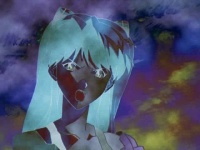 |
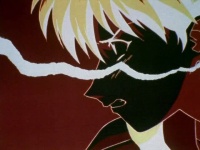 |
 |
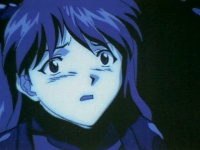
|
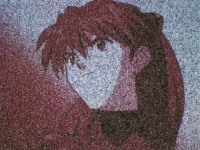 |
 |
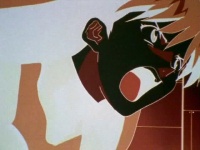 |
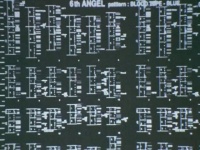
|
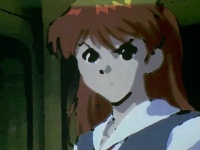 |
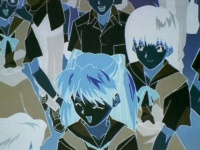 |
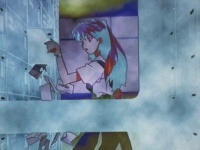 |
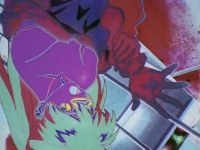
|
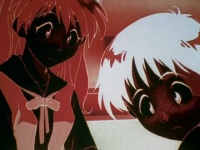 |
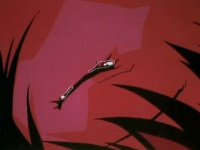 |
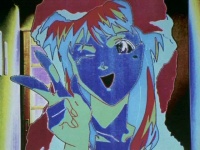 |
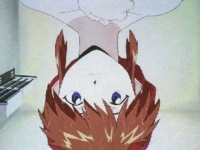
|
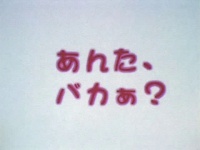 |
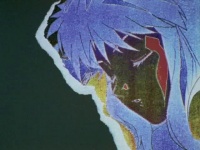 |
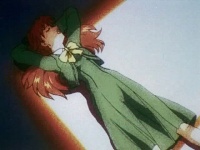 |
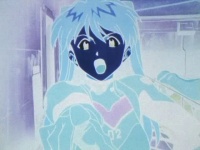
|
 |
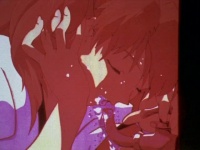 |
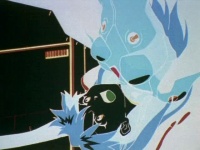 |
|
|
Episode #22 Cuts
| |||
| Flash-sign Montage Sequence 3 | |||
 |
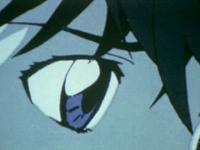 |
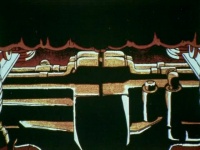 |
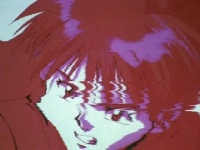
|
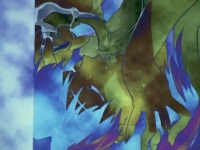 |
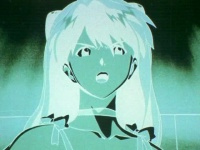 |
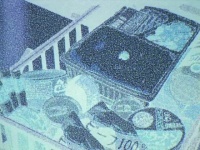 |
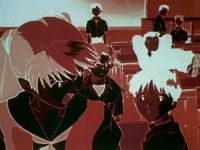
|
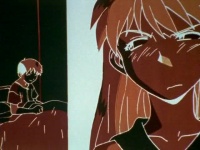 |
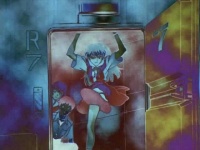 |
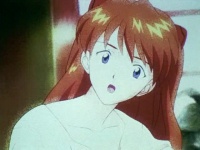 |
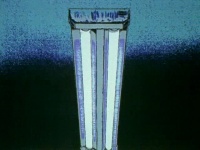
|
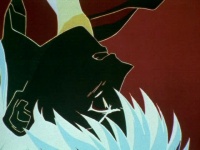 |
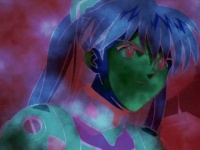 |
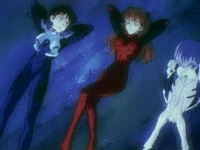 |
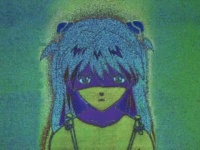
|
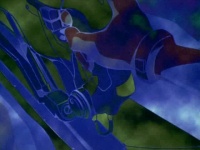 |
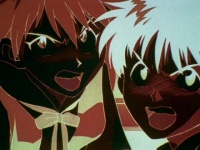 |
 |

|
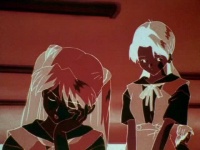 |
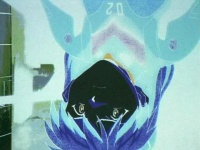 |
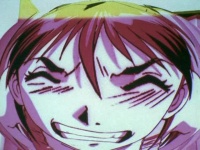 |
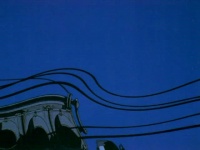
|
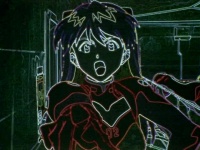 |
|||
|
"Episode 22 Cuts"
SHOTS 22-25: But the only way she can maintain this control, it seems, is by making others feel inferior, thus driving them away from her. With no one to control, she is no one. Normally, being this terrible to people, being this commanding, would be anathema to most, but the next shot of Asuka looking on in terror is inverted -- revealing that she is not terrified at her own mental creation, but, as the next shot proves, thrilled, insanely, maddeningly happy about it. This, amplified by the the fish-eye lens, and the following distorted shot, seems to show that Asuka is indeed twisted. And if that was not enough, the montage ends with the "accusative Asuka", effectively saying: "THIS IS YOU." | |||
It is apparent in the context of the montages as well, even the mindrape itself, Asuka is continually placed in positions of weakness. This is evidenced by the "Arael avatar" standing over the fetal-position, naked Asuka, and the "one of many" crowd scene. More on this later, because I am awaiting feedback.
- For differing opinions and discussions about these images, please take a look at this thread
Subverting Wide-Shot stereotypes in Episode 24 of Neon Genesis Evangelion
There is a reasonable adage about the use of the wide or extreme-wide shot in anime series: they are used to save money. With the audience lacking the ability to see the small mouth movements, the animators are able to save frames, and save funds on the production budget. However, amongst fans of a more visceral type, these shots can often seem “lazy” at best, or seemingly a forewarning of a rapidly failing production.
Evangelion was no stranger to these production troubles-- the ship was sinking fast around the time that the last five or so episodes were made. But that being said, these wide shots do not seem to fit the usual “lazy” stereotype that seems to fit so well on the mantle of other anime series that were made with much less directorial care than Evangelion. In fact, in a way startling similar to other media that have used the wide shot, these compositions often give the impression of a “painting” rather than simply a frame of animation.
Following Eisenstein's memorable words that “cinema is a synthesis between art and industry”, there is no reason why the “budget-saving” wide shots in Evangelion can't be artistic. With the help of some sub textual readings into the wide shots on both a narrative and technical level, this essay hopes to present that Evangelion's wide shots are indeed a manifestation of Eisenstein's synthesis.
For the sake of reference, the following wide shots will be used for the sake of this argument:
| Episode 24 Wide Shots | |||
 |
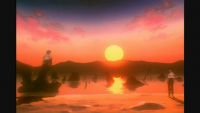 |
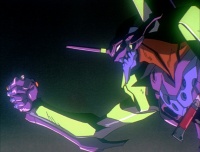 |
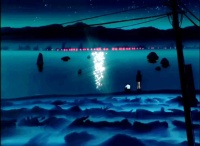
|
|
"Episode 24 Shots" Wide shots used for argument | |||
1.This shot is manifold in dichotomy. First we have what is the obvious: Ritsuko mourning the loss of her cat, and Gendo angry over the loss of the dummy system. But what we have here goes a little deeper than that: What we see now is a Ritsuko who has lost all love for her work, and a Gendo who is working for his love. This shot is a manifestation of the things that it cost the two of them: Ritsuko has lost the things that gave her life justification, Gendo has lost his “soul” and empathy in the process of executing his plan for instrumentality.
2.What goes even deeper is the symbol that sits in the middle of the two of them: a glowing symbol of NERV. What we can see here is the organization and symbol that brought the two of them together, and then drove the two apart. Unlike the previous image where the composition isn't as important as the words being spoken, here we have an image of the very essence of their relationship. For Gendo, NERV is a tool to retrieve his wife. Thus, for the most part he treats those who are a part of it like tools. His emotional detachment to many of the characters is quite obvious throughout the series. For Ritsuko, however, NERV is the justification for her being, what makes Ritsuko Ritsuko is NERV itself, and she treats it very seriously. A classic “conflict of interests” manifested through the organization itself is brilliantly played in this scene through both words and visuals.
1.This shot is manifold in dichotomy. First we have what is the obvious: Ritsuko mourning the loss of her cat, and Gendo angry over the loss of the dummy system. But what we have here goes a little deeper than that: What we see now is a Ritsuko who has lost all love for her work, and a Gendo who is working for his love. This shot is a manifestation of the things that it cost the two of them: Ritsuko has lost the things that gave her life justification, Gendo has lost his “soul” and empathy in the process of executing his plan for instrumentality.
2.What goes even deeper is the symbol that sits in the middle of the two of them: a glowing symbol of NERV. What we can see here is the organization and symbol that brought the two of them together, and then drove the two apart. Unlike the previous image where the composition isn't as important as the words being spoken, here we have an image of the very essence of their relationship. For Gendo, NERV is a tool to retrieve his wife. Thus, for the most part he treats those who are a part of it like tools. His emotional detachment to many of the characters is quite obvious throughout the series. For Ritsuko, however, NERV is the justification for her being, what makes Ritsuko Ritsuko is NERV itself, and she treats it very seriously. A classic “conflict of interests” manifested through the organization itself is brilliantly played in this scene through both words and visuals.
1.This shot is manifold in dichotomy. First we have what is the obvious: Ritsuko mourning the loss of her cat, and Gendo angry over the loss of the dummy system. But what we have here goes a little deeper than that: What we see now is a Ritsuko who has lost all love for her work, and a Gendo who is working for his love. This shot is a manifestation of the things that it cost the two of them: Ritsuko has lost the things that gave her life justification, Gendo has lost his “soul” and empathy in the process of executing his plan for instrumentality.
2.What goes even deeper is the symbol that sits in the middle of the two of them: a glowing symbol of NERV. What we can see here is the organization and symbol that brought the two of them together, and then drove the two apart. Unlike the previous image where the composition isn't as important as the words being spoken, here we have an image of the very essence of their relationship. For Gendo, NERV is a tool to retrieve his wife. Thus, for the most part he treats those who are a part of it like tools. His emotional detachment to many of the characters is quite obvious throughout the series. For Ritsuko, however, NERV is the justification for her being, what makes Ritsuko Ritsuko is NERV itself, and she treats it very seriously. A classic “conflict of interests” manifested through the organization itself is brilliantly played in this scene through both words and visuals.
| Episode 24 Wide Shots | |||
 |
 |
 |

|
|
"Episode 24 Shots" Wide shots used for argument | |||
